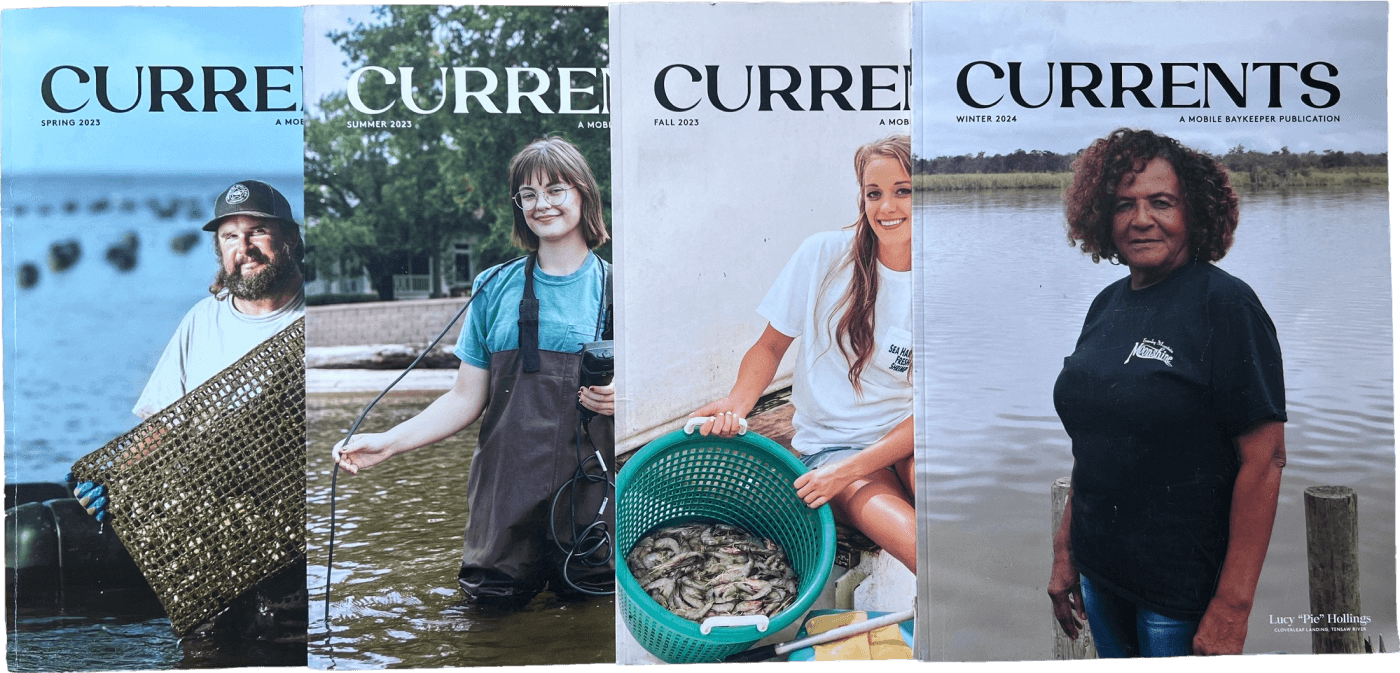
This article is from the summer edition of Mobile Baykeeper’s print quarterly, CURRENTS. The magazine is mailed to active members who have given more than $50 in 2023. To get on the magazine’s mailing list, donate here.
by Jade Martin
The people of Coastal Alabama want to see their backyard in its most pristine form. Citizens speak up when they notice trash in the roadway, dead fish floating in the water, or a bad smell coming from a creek. But it’s not always obvious where to direct these complaints. Writing a letter to an elected official is one option, or calling the Environmental Protection Agency — but it’s not likely there will be an immediate response.
Like many state environmental programs, Alabama receives minimal funding and has limited capacity to grapple with all the pollution issues our area faces. That is why Mobile Baykeeper’s AmeriCorps Patrol Team works as an intermediary to triage citizen concerns and offer preliminary findings to local and state enforcement agencies so they can deal with threats in a timely manner.
When the phone rings in the Baykeeper office, you never know what to expect. Someone may be calling to ask where they can take leftover grease from a holiday dinner, or what to do about the raccoon that has been terrorizing their garbage can. While the latter is out of our purview, we always take the time to listen and thank the caller. Anyone within the Mobile Bay Watershed can call 251-433-4229 (ext. 111), email [email protected], or fill out the online form on our website to report concerns about pollution in our waterways.
Pollution can entail a multitude of things. Some of the issues we look into include industrial pollution, sediment and stormwater runoff from construction sites, sewage and septic spills, and the unpermitted and nonregulatory clearing and filling of wetlands and waterways.
Parts of Coastal Alabama are undergoing huge growth and development. While this growth is often good for the economy, it can negatively impact the environment. So we rely on citizens to stay vigilant about any problems that might arise. One of our most frequently reported concerns is construction runoff entering waterways. Increased sedimentation making its way into a stream, for example, can cause significant turbidity, which suffocates native flora and fauna.
Unfortunately, we see poor environmental protection efforts more frequently than not. It is not uncommon for construction sites to have turbid water pouring off site. This negligence not only degrades the surroundings of the new development, it also impacts everything downstream of it.
There are multiple ways to achieve both a strong economy and stable environment. It can be done through low-impact development, land conservation easements, and the implementation of good management practices on site, in accordance with state law.
When a concern is causing significant water-quality problems, a member of the Patrol Team will plan an inspection. We use aerial maps, state, city, and county permits, site photos, and more to document the extent of the issue. Once enough evidence is gathered, we follow up by contacting relevant enforcement agencies and/or filing complaints. A typical inspection of a construction site involves a pair of mud-stained boots, a cooler full of turbidity samples, an inspection plan that gets us close to the site and impacted waterbody, and snapshots of unacceptable practices that can be used for filing a complaint.
The Mobile Bay Watershed is home to a diverse array of plant and animal life, and it provides many important ecological, economic, and recreational benefits to the community. As a result, we believe it is our responsibility to protect and preserve this valuable resource for future generations.

